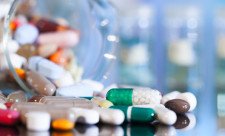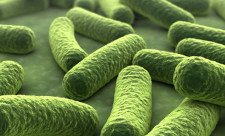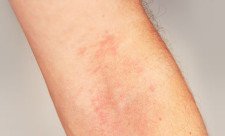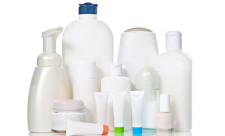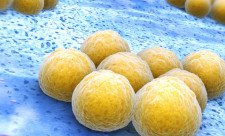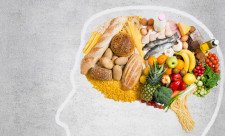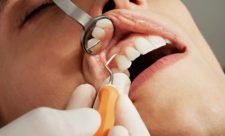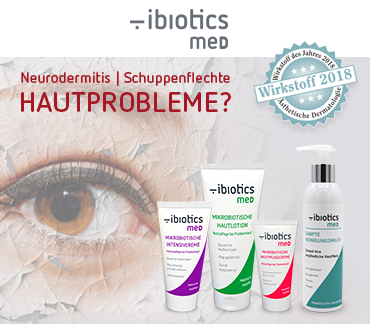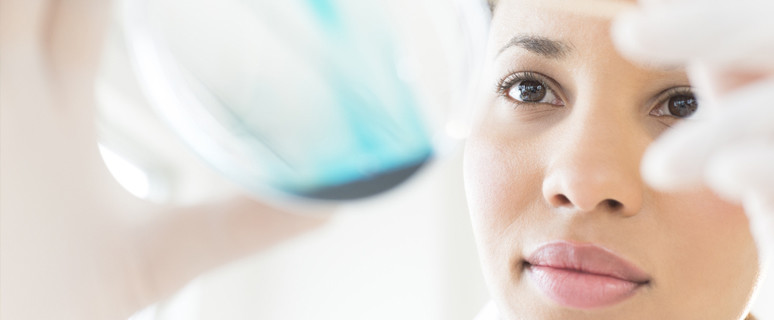
Mankind’s primary weapon against dangerous bacteria has become blunt. Even the smallest cut may be deadly.
By Karsten Polke-Majewski, published November 22, 2014, in ZEIT ONLINE
And all of a sudden, another antibiotic ceases to work. As a consequence, major medical procedures such as chemotherapy, organ transplantation, and dialysis become deadly dangers since they weaken the patients’ immune system to the point where their bodies are no longer able to defend itself against pathogens. The bacteria the antibiotics were to target developed immunity. Even pneumonia and sepsis often become impossible to treat.
There have been warnings enough. “The problem is so serious that it threatens the achievements of modern medicine”, urged a dramatic report of the World Health Organization in the summer of 2014. The World Economic Forum has listed resistance to antibiotics among the largest risks to the global economy. Anyone speaking to infectiologists, microbiologists, and doctors will hear the same sentences over and over again: “A disaster waiting to happen.” “Every month, we lose patients because we’ve run out of treatment options.” “We will soon lack drugs against some MRSA strains, and there aren’t any in the pipeline at for a decade.”
According to official estimates some 7,500 to 15,000 people in Germany die each year as a result of infections, most of them caused by bacteria which are resistant to antibiotics. Research undertaken by ZEIT ONLINE, DIE ZEIT, and CORRECT!V, however, suggests that the actual number figure may be significantly higher. Billing data from all German hospitals indicate that in more than 30,000 cases where patients died, doctors faced one of the three most prevalent multi-resistant pathogens, MRSA, ESBL or VRE. In these cases, they billed for the respective diagnosis or treatment. There can be no absolute certainty, however, that the pathogens actually caused the respective patient’s death. Health insurance experts, however, estimate that even these numbers might be too low as hospitals do not bill for every diagnosis. The datasets also show that the number of billed VRE diagnoses has increased by 40 percent since 2010, those of ESBL pathogens by 50 percent.
How could we let this happen?
This can best be understood by starting with doctors in surgeries and hospitals, the headquarters of pharmaceutical companies, farmers and politicians, or even with the patients themselves – they all contribute to this constantly worsening problem. Because they may be aware of the solution, yet fail to act on it consistently. Because people may be intelligent, yet adapt only slowly to new situations.
Bacteria, on the other hand, evolve constantly. They proliferate more easily if, pressed for time, doctors resort to broad-spectrum antibiotics to get rid of patients, or hospital employees for the sake of convenience fail to comply with even the most basic hygiene rules. Bacteria couldn’t care less whether pharmaceutical companies’ return targets make antibiotics appear unprofitable, or that our hunger for cheap meat drives the meat industry to use antibiotics in huge quantities.
Bacteria are nothing if not fast. They reproduce about every 20 minutes. The result is a constant stream of pathogens with a mutated genetic make-up. With bacteria numbering in the billions, there will be some for which medicine has as yet no remedy. If you wish to beat them, you can’t afford to slack off.
Hence, it should be worth your while to start by checking your own medicine cabinet. Between opened boxes of throat pastilles and half-empty cough syrup bottles, you will often find a package of expired antibiotics. Some tablets may be gone, but not all.
Billions of bacteria are all over our bodies, both inside and outside, in particular on our skin, in the nasopharyngeal zone, and in our gut. We’re on good terms most of the time, and we actually need them. Then comes the time when your immune system weakens and microbes which cause diseases invade your body. Your head hurts, your limbs ache, work calls. So you head to your GP and receive a prescription for a broad-spectrum antibiotic. This targets diverse pathogens simultaneously, and sure enough: a few days later, you’re feeling better. So why continue following the doctor’s orders and keep swallowing a chemical concoction?
Yet discontinuing would be reckless and dangerous. Antibiotics kill pathogens, but not all simultaneously. Stop taking them too early and the surviving bacteria become resistant through mutation. But we also have to discontinue taking antibiotics early enough once a patient stops showing symptoms. Since antibiotics kill all susceptible pathogens, resistant bacteria thrive all the better. And not only where they are. People are constantly in contact with others, touching them, sneezing all over everyone. In this way, resistant bacteria spread.
Should the patients’ ignorance bear the blame for this disaster? Yes, but not entirely.
The GP would have had the option of testing for and determining the pathogen the patient is infected with. Had he done so, he would have been able to prescribe a drug which targets only those bacteria. This, however, would have taken two days, as rapid tests are only available for a very limited number of pathogens. In addition, insurance companies will often not cover the test. They cost 35 to 70 euro, as the health economist Peter Oberender from Bayreuth calculated.
Hence, doctors won’t prescribe a drug which targets the pathogen in question but opt for what they are familiar with, frequently a broad-spectrum antibiotic. While this may often help the patient, it also means that at the same time, pathogens are separated: the susceptible die, the resistant survive and thrive. With the drug targeting a wide range of pathogens, various will become resistant.
Many doctors remain unaware of this. 64 percent of all registered doctors, for instance, believe that their daily prescriptions have no influence on the number and strains of resistant pathogens in their vicinity. Older doctors, in particular, would rather rely on experience and gut feeling than be guided by resistance patterns in their region, as the Robert Koch Institute found out.
Each individual GP may consider his or her impact on resistance patterns negligible. As a group, however, registered doctors have a strong influence on the evolution of pathogens. They prescribe some 80 percent of all antibiotics used in medicine. Katja Peters, a general practitioner in Hamburg, has specialised in treating patients suffering from infection with multi-resistant pathogens. “Many doctors fail to be as diligent when prescribing antibiotics as they would be when, e.g., prescribing blood pressure medication”, she says.
So is it the registered doctors which should be held responsible for the disaster? Yes, among others. But there are also the hospitals.
One can argue at length whether multi-resistant pathogens are bred in or introduced to hospitals. Honest hospital epidemiologists say: both. On the one hand, about a third of population carries these bacteria and will introduce them to hospitals during surgeries or other treatments. On the other hand, clinical physicians administer antibiotics too hastily. Often, merely disinfecting an affected patient’s nose, skin, or wounds would be just as effective.
Rare antibiotics are most frequently administered in ICUs. Here, patients are treated who have failing immune systems because they suffer from open wounds, sepsis, or pneumonia. Or because chemotherapy has weakened the body’s defensive mechanisms. Or because a newly transplanted organ has to be protected from rejection. Or because they are old and their bodies have weakened. In many of these patients, doctors will encounter pathogens which may only be defeated using last-resort drugs. Even when competently administered, additional resistant strains will result, which may then spread to other patients. In the long run, more and more persistent strains will be bred.
We’re caught between a rock and a hard place: Any doctor wanting to heal a patient will have to resort to antibiotics. Yet every use will result in resistance.
Infectiologists such as Katja de With from Dresden demand that drugs be administered more rationally. Doctors, Ms. De With says, will have to learn how to make better diagnoses. They have to be aware of the resistance situation in their region and know precisely which pathogen they are up against in order to use drugs less frequently and more precisely.
But not even one-half of all German ICUs have introduced dedicated antibiotic ward rounds, even though these are a good idea even from a cost perspective alone. According to Oberender’s calculations, each MRSA infection acquired in an ICU will cost the respective hospital 13,725 euro. For all multi-resistant pathogens, costs range from 3,000 to 20,000 euro per case.
So the hospitals are at fault? Indeed. But there’s also the pharmaceuticals industry.
The battlefields of World War II saw the first wide-spread use of antibiotics. Alexander Fleming had discovered penicillin already in 1928. But it was only in 1942 that mass production of the drug became possible in the US. If enemy bullets killed soldiers, at least the wounded shouldn’t have to die from wound infections.
After the war, research continued with tremendous force. By the mid-1960s, scientists had discovered a wide range of new substance classes – so many, in fact, that the sheer number lead to research being discontinued in some cases. It was widely assumed that infections had ceased to constitute a real problem. Even though the medical community had already become aware of emerging resistances, the number of available drugs was so high that one would always be effective.
The pharmaceutical industry began to look for new business opportunities. “By the end of the 1990s, companies began to shut down their research activities”, says Jochen Maas, managing director of R&D Germany for the pharmaceutical company Sanofi. “There had been no new discoveries for some time; the low-hanging fruit had all been picked.”
In addition, the hope of discovering new synthetic compounds systematically through the use of genome analysis never materialised. Almost all major corporations then proceeded to cancel their research activities. Currently, next to Sanofi, six other major and 20 smaller companies have new agents in the pipeline.
Antibiotics are simply not profitable enough. Development costs are just as high as those for chronic disease drugs. Chronic sufferers, however, have to take medication their entire lives, whereas patients need antibiotics for only a short time. Even though antibiotics are the most prescribed of all drugs, realised profits remain comparatively small.
This situation became even more problematic when the first major patents expired. Generic manufacturers moved into the market. Prices dropped, antibiotics went into the pharmaceutical bargain bin. In 2012, turnover for all antibiotics prescribed in Germany was 772 million euro. By comparison: Glivec (in the US: Gleevec), a cancer blockbuster drug, achieved a turnover of some four billion euro in 2013 alone.
“It is almost impossible to produce an active ingredient in Europe for this little money”, says Thomas Rudolph. He analyses the pharmaceutical market for the consulting firm McKinsey. “Until the 1990s, some 80% of all ingredients were sourced in Europe and the US and were processed by the pharmaceutical manufacturers.” Today, four out of five substances are imported from China and India.
This wouldn’t be a problem as such, if it wasn’t for a paradox: India not only produces antibiotics on a grand scale, but also simultaneously highly resistant bacteria. This is not a coincidence. To begin with, the causes underlying emerging resistance are similar to those round here: lack of hygiene, unchecked prescriptions, patients who fail to follow instructions. But there are also two other major reasons: Many last-resort antibiotics carefully locked away here are cheaply produced in India and sold uncontrolled on the streets. Also, manufacturers tend to take environmental requirements less than seriously.
Joakim Larsson, professor at the Institute of Neuroscience and Physiology of the University of Gothenburg, tested samples of Indian waste water in Pantancheru, a town near Hyderabad. The city is home to the world’s largest production facilities for generic drugs. “Our samples contained by far the highest levels of pharmaceuticals ever reported in any effluent“, he says. There has been evidence that under these conditions, genetic mutation of bacteria is accelerated.
It remains unclear how India’s most feared bacteria emerged. It was first discovered in New Delhi, among others in drinking water. This bacterium produces an enzyme christened NDM-1 which inhibits the last really powerful class of antibiotics. The Robert Koch Institute is aware of only two drugs which remain able to defeat it.
Bacteria are able to exchange genes which produce these enzymes. Scientists warn that the gene for NDM-1, in particular, will be passed on with any number of other resistances. In Germany, there have as yet been only very few incidents involving bacteria producing NDM-1. In India, on the other hand, patients discharged from hospitals have a 90 percent risk of carrying the pathogen. Health tourists and travellers who return sick from India have introduced the pathogen to Europe. Four years ago, for example, British women who had undergone plastic surgery in India imported the resistant gene to Europe.
So it is the pharmaceutical industry and the globalised market who are responsible for the fiasco? Yes. And the farmers.
Because eventually, cheap antibiotics also make their way to meat production facilities in Europe and North America. In German stables, some 1,700 tonnes are used every year, in human medicine, about 700 to 800 tonnes. Ever since antibiotics became available, they have been fed to livestock, originally to accelerate growth, today, to stop diseases from spreading in overcrowded stables. A systematic administration of medicine in stables housing thousands of animals, however, remains impossible, and thus newly resistant bacteria will automatically develop.
These germs can jump to humans, e.g. from chicken. This was first demonstrated by Wolfgang Witte, former director of the Robert Koch Institute’s German Reference Centre for Staphylococci, who spent decades researching MRSA. He showed that the germs were able to cause infections in humans. There are no figures available for people who died from LA-MRSA (livestock-associated MRSA) infections. However, there is evidence of individual cases, for instance at the University Hospital in Munster or in Denmark. We also know that one in four individuals occupationally exposed to pigs or chicken carries the germ.
So somehow, everyone is to blame: Patients, doctors, hospitals, manufacturers, agriculture. First and foremost, however, should be the realisation that mankind cannot afford to be negligent.
Yet maybe the harlequin ladybird (aka multicolored Asian lady beetle) will save us all. In any case, Andreas Vilcinskas of the Fraunhofer Institute IME remains positive. This tiny beetle has one notable talent: Its ability to survive in totally alien worlds. Quite obviously, it is immune to the strange germs it encounters. “Invasive species have to be able to resist the diseases they come across in colonised areas”, says Vilcinskas. Hence, they have to have the means to protect themselves from infections. “Of all organisms, insects are the most successful at capturing niches to survive. Rat-tailed maggots are even able to stay alive in slurry.” Maybe, the scientist hopes, the secret of their defence mechanisms could also help mankind.
Yet identifying these isn’t easy. Agents which kill bacteria exist in great numbers. Frequently, however, these will also harm people.
At the Helmholtz Institute in Saarbrucken, scientists also search for novel components, and they do so where competition among microbes is most fierce, e.g. in compost heaps. At the Leibniz Institute in Jena, on the other hand, researchers hope to find genes in fungi which produce new antibiotics. They haven’t discovered much, the situation is similar abroad. “But if no one searches, it won’t take long before we’ve run of things which help”, says Rolf Müller of the Helmholtz Institute. “We need as many seekers as possible.”
Which is expensive. And so we have another culprit: Policy makers.
Germany’s grand coalition may have declared in its agreement that it intends to shore up research into active substances. And we may for years now have had a German Antimicrobial Resistance Strategy, initiated by the Federal Ministry of Health. The ministry may also have begun a “Pharma Dialogue” with representatives of the scientific and business communities, which will feature talks which run until early 2016.
Yet any enquiries into the specific amount money invested into the research for new antibiotics will be referred to the Federal Ministry of Education and Research (BMBF). Its answer is: “Currently, the BMBF supports several projects to develop antibiotics with around 8.8 million euro in total.” And: The budget committee of the German Bundestag has provided additional funds to the BMBF totalling one million euro. Experts, however, estimate that the costs for a single new antibiotic – from identifying the agent to rollout – to be between 800 million and 1.5 billion euro.
Much more would need to be done to accelerate research and development. Ideas have been mooted: The state might, similar to book price controls, guarantee purchase prices for antibiotics. Collaboration between industry and public institutes could be streamlined. Clinical studies could receive public funds. Approval procedures for new antibiotics could be simplified, patent protection for existing ones be extended.
Yet even if all these measures were realised: It would insufficient. The processes would take too long. It takes about ten to fifteen years before a new drug is market-ready. Until we get there, we should be very careful with using what we have.
With contributions by: Edda Grabar
– See more at: https://www.gesunde-bakterien.de/antibiotika-das-wundermittel-wirkt-nicht-mehr/#sthash.TimPo63D.dpuf
Dieser Post ist auch verfügbar auf: German

 21. Jan 2015
21. Jan 2015 Popular
Popular Recent
Recent Comments
Comments
